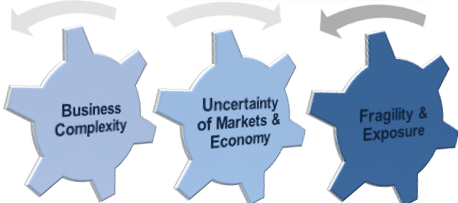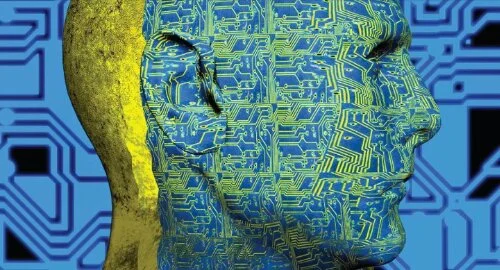
Business management, particularly for those intent upon ‘change’ or responsible for managing exposures, needs a rigorous, objective, measurement of the endogenous properties (complexity) that enables the functionality from which (through interactions with exogenous parties) the business generates the revenues that sustain it in changing and turbulent economic times.
“Complexity increases cost and decreases flexibility — often in unforeseen ways — and also tends to decrease stability,”….
Peter Leukert, CIO of Commerzbank
It is the number, nature and integrity of dynamic, multi-scalar, interactions that are the sources of strength (enabling performance greater than the sum of the parts). The ability to distinguish and respond to ‘signals’, that maintain the variety, effectiveness and agility of the complex system, from the ‘noise’ of flawed metrics, self-serving culture, hierarchical structure (silos), skewed incentives – of an unsustainable, failed or failing, model (reliant upon assumption, reflexive, subjective, statistical analysis and prediction) that has its foundation in flawed (linear) economic thinking.
We won’t get different or better answers while we keep on asking the same questions.
For meaningful change to occur and to be sustained requires a rigorous justification, sufficient to counter financial projections that satisfy the goals of C-level short-termism that are detrimental to the stability and long term health of the business.
Read more of this post


 Organizations often use different names in different areas for what are essentially the same controls addressing the same Causes of Failure. For instance, processes such as Process Hazard Analysis (PHA), Hazard and Operability Study (HAZOP), Process Failure Modes and Effect Analysis (PFMEA), Equipment Criticality Ranking, risk registers, risk “bow-ties”, and other similar tools are all designed to address the same common Cause of Failure – failure to identify and assess risk. Implementing multiple variations of the same tool in response to poor performance or incidents drives organizational and process complexity.
Organizations often use different names in different areas for what are essentially the same controls addressing the same Causes of Failure. For instance, processes such as Process Hazard Analysis (PHA), Hazard and Operability Study (HAZOP), Process Failure Modes and Effect Analysis (PFMEA), Equipment Criticality Ranking, risk registers, risk “bow-ties”, and other similar tools are all designed to address the same common Cause of Failure – failure to identify and assess risk. Implementing multiple variations of the same tool in response to poor performance or incidents drives organizational and process complexity.










